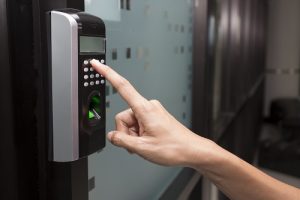
Biometrics are just one means of multifactor authentication–but what does the future of authentication look like?
More and more organizations are utilizing multifactor authentication to prevent their systems from being compromised. A number of banks, for example, have two factor authentication in place–but despite this, their security has consistently been compromised. There’s a call, then, for more forms of authentication being required for security technologies. This depends on the tech and can include something you have like a physical card or password token, something you know like a PIN or password, and something you actually are, like a fingerprint or even your face. Let’s take a look at what the future of multifactor authentication may look like.
Biometrics
Biometrics can include anything from your fingerprints to your voice. Essentially, biometrics are any kind of authenticator that uses physiological characteristics. It’s a reliable means of authentication as it’s far harder to replicate something like a fingerprint than it is to figure out a password. It takes some of the stress off of the users as well, putting far less responsibility on them to be aware of their own authentication information and instead letting them use something they’ll always have to help authenticate identity.
Facial Recognition
Facial recognition, a type of biometric, is a promising advancement in multifactor authentication. It’s easily accessible, as even a cell phone camera is capable of reading faces. Traditional facial recognition systems measure the distance between the eyes, the position and size of cheekbones, the nose, jawlines, and so on. This then comes up with a blueprint for the face, a unique code that can be recognized as a means of authentication later on for something like our DriverCam.
Intelligent Cameras and Access Control
As we move towards more advanced forms of security measures, there’s a lot of call for artificial intelligence to be implemented in these systems. What’s the difference between a system that uses A.I. versus one that doesn’t? A scanner with A.I. may be able to recognize specific threats and alert personnel, such as our Automatic Under Vehicle Inspection System. Taking less of the burden off of manual inspection and placing more of an emphasis on intelligent cameras capable of recognizing specific vehicles or personnel as a means of multifactor authentication is surely the future of security tech.
Three Factor Authentication With Gatekeeper
Gatekeeper Security’s suite of intelligent optical technologies provides security personnel with the tool to detect today’s threats. Our systems help those in the energy, transportation, commercial, and government sectors protect their people and their valuables by detecting threats in time to take action. From automatic under vehicle inspection systems, automatic license plate reader systems, to on the move automatic vehicle occupant identifier, we offer full 360-degree vehicle scanning to ensure any threat is found. Throughout 30 countries around the globe, Gatekeeper Security’s technology is trusted to help protect critical infrastructure. Follow us on Facebook, Google+, and LinkedIn for updates about our technology and company.
